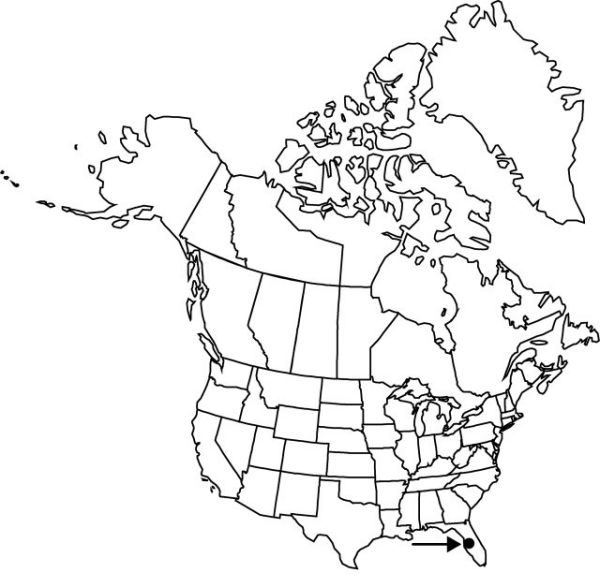Difference between revisions of "Triphora amazonica"
Beih. Bot. Centralbl. 42: 75. 1925.
FNA>Volume Importer |
FNA>Volume Importer |
(No difference)
| |
Revision as of 21:39, 16 December 2019
Plants delicate, 4–9 cm, glabrous. Roots from fleshy ovoid tuberoids, 10–20 × 5–8 mm. Stems erect, unbranched, green, slender, leafy. Leaves 2–5, widely spaced along stem; blade green to yellow-green, broadly ovate to nearly reniform, 4–8 × 7–13 mm, margins entire, apex acute to rounded; distal leaves narrower than proximal, 4–8 × 4–13 mm, margins entire. Inflorescences terminal, solitary; floral bracts leaflike, ovate-lanceolate, to 8 mm. Flowers resupinate, nodding to nearly erect, gaping to somewhat so, white or pink; dorsal sepal oblong-lanceolate, 10–10.5 × 2.5–2.8 mm; lateral sepals oblong-lanceolate, falcate, 10–10.5 × 2.5–2.8 mm; petals oblong-lanceolate, slightly falcate, 10 × 2–2.3 mm; lip facing away from stem, ovate, clawed, 3-lobed, 8.5 × 6 mm, middle lobe finely erose, undulate, ovate to suborbiculate, lateral lobes triangular, falcate; disc with 3 pale green, denticulate to papillose, longitudinal crests; column greenish, slender, clavate, 8 mm, anther stalked; pollinia yellow. Capsules erect or pendent, ellipsoid, 8–11 mm.
Phenology: Flowering summer.
Habitat: Upland hardwood hammocks, in rich, well-drained, moist humus
Elevation: 0–20 m
Distribution

Fla., West Indies (Dominican Republic, Puerto Rico, Trinidad), South America (Brazil, French Guiana, Guyana).
Discussion
Originally J. D. Ackerman (1995) determined vegetative material from Puerto Rico as the Florida endemic, Triphora latifolia. After a comparison with it, and some others from Trinidad, with Schlechter’s illustration, the only difference that could be detected between T. latifolia and T. amazonica was that the middle lobe of the lip may be rounded in T. latifolia and acute in T. amazonica (J. D. Ackerman 2000). The distribution of T. latifolia as known in 1995 (Florida, Puerto Rico, and Brazil) was unusual, but recent information showing that T. amazonica ranges from Brazil to Guyana, French Guiana, Surinam, Trinidad, and Dominican Republic makes the link with Puerto Rico and Florida more reasonable (J. D. Ackerman 2000) and supports treating T. amazonica and T. latifolia as conspecific. Ackerman observed that such geographic patterns suggest that rare species may have more extensive distributions than presently known, or that additional specimens may show that the disjunct populations are not conspecific.
Selected References
None.